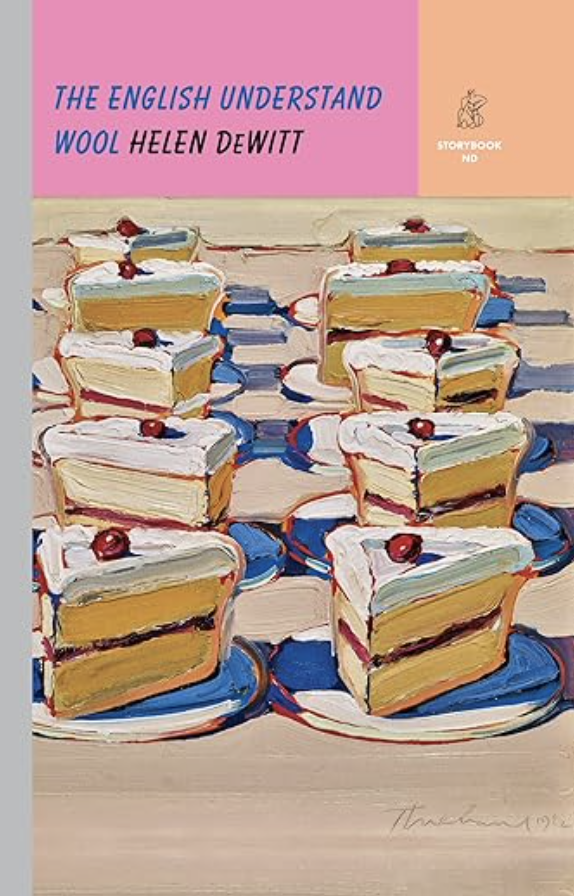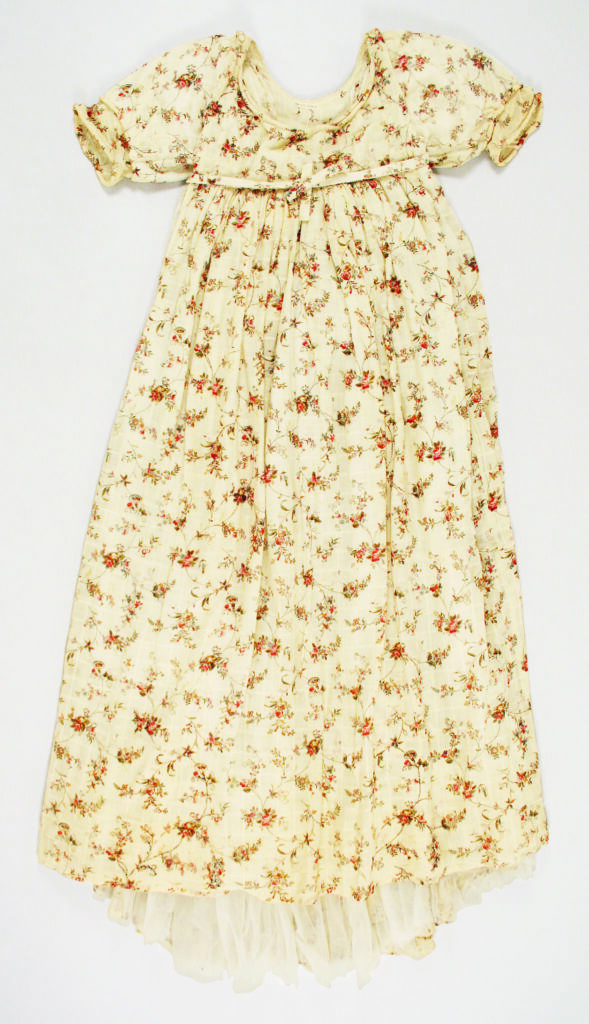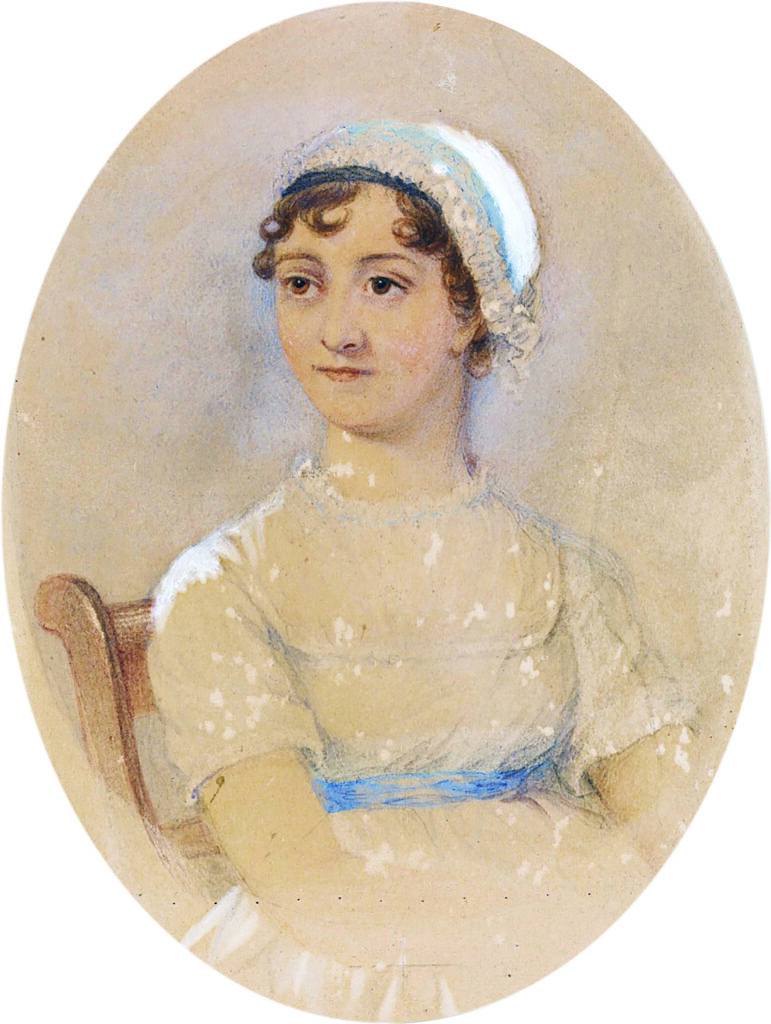Jane Austen valued fashion as an intrinsic part of one’s character — whether in her own life or in a novel.

Jane Austen’s Wardrobe
Hilary Davidson
(Yale University Press, 2023)

The English Understand Wool
Helen DeWitt
(New Directions, 2022)
Jane Austen’s publishers once hailed her as « a woman for the ’90s ». Not the 1790s, but the 1990s. In 1995, Everyman Library issued fetching new editions of her major novels, making no secret in their ad copy that they were striking while the ticket sales were hot. The years 1995 and 1996 alone saw the BBC miniseries Pride and Prejudice with Jennifer Ehle as Elizabeth Bennett and Colin Firth as Mr. Darcy; Sense and Sensibility with Emma Thompson and Kate Winslet; Persuasion with Amanda Root; Emma with Gwyneth Paltrow; and Clueless, Amy Heckerling’s adaptation of Emma, starring Alicia Silverstone as the teenaged clotheshorse Cher. Austen was suddenly fashionable, or, rather, the film adaptations of her novels were. And Regencyera fashion was suddenly coveted, or, rather, the Empire-waist dresses made by costume designers and worn by the likes of Gwyneth Paltrow were. Lost in the so-called new Age of Austen, in these translations from page to screen and costumes to clothes, was Austen herself.



Jane Austen was born on 16 December 1775, and died of an unidentified illness on 18 July 1817, at age 41. Between 1811 and 1815, five of her major novels were published: Sense and Sensibility, Pride and Prejudice, Mansfield Park and Emma. Two more, Northanger Abbey and Persuasion, were published posthumously in 1817. We don’t know for certain what Austen looked like. Experts disagree about whether a handful of surviving formal and informal portraits of tall women with brown hair and books dating from Austen’s lifetime are depictions of the author. But two extant portraits, both made by Austen’s sister Cassandra and preserved by the family, are certainly of Austen. In one of these, done sometime between 1805 and 1810, the lines of Austen’s garments and form are sketched in pencil, and her face has been filled in lightly with watercolor. She sits with arms crossed and head turned slightly to look at something to her right. Her face is round and generic, her eyes brown, and she wears an unobtrusive cap. A few brown curls poke out from under it. Family members who knew Austen deemed the portrait’s face « hideously unlike » her. Cassandra abandoned work on it.
Clothes may make the woman, to borrow a phrase.
« But what of the clothes? » asks the fashion and textile historian Hilary Davidson in her book, Jane Austen’s Wardrobe (Yale, 2023). Yes, what of them? Cassandra sketched Austen’s garments so lightly and sparingly in the « hideous » portrait that what Austen might have been wearing fired the imaginations of James Andrews and William Home Lizars, two late nineteenth-century artists tasked with adapting Cassandra’s work for the frontispiece of a book about Austen. In his watercolor adaptation, Andrews uncrossed Austen’s arms and dressed her in puffy sleeves and blue sashes, shiny enough to attract a magpie, winding around her waist and cap. Using Andrews’s watercolor as a basis for his lithograph of Austen, Lizars expanded the cap to look matronly, tightened the sash to highlight the bosom’s shape, and added a gauzy texture to the dress. Not long after Lizars’s lithograph appeared in 1870, so did an anonymous engraving based on it. The casually cross-armed Austen of Cassandra’s original portrait becomes, in the engraving, someone eager to pose. She rests one arm on the long side of a writing portfolio, has a voluminous doily of a cap, and wears a baby blue, sateen-looking dress. Frills abound. These are the images of Austen that turn up in a Google search, and a version of them appears on the Bank of England’s ten pound note issued in 2017. According to London’s National Portrait Gallery, Andrews’s interpretation of Austen « has become completely associated in our minds with Jane Austen herself » because of « constant reproduction ». Clothes may make the woman, to borrow a phrase. But in this case, the woman in question did not choose them for herself.

Hilary Davidson, an expert in period clothing and garment construction, returns to Cassandra’s original portrait to trace the spare lines, buttons, and folds of the clothes Austen herself selected and Cassandra sketched. Instead of frilly blue satin, Austen wore what appears to be a summerweight dress, perhaps of cotton muslin, practical but suggestive of Austen’s taste. There are small buttons at the shoulder. Rather than a sash or ribbon tightened to produce gathers and create shape, a waistband lays flat. Austen wears a plain cotton cap of the sort women wore indoors to protect their hair. It is an outfit a person would wear on what we might call a « low-key » day. Which is to say, Austen had other days and other clothes. Clothes for staying in and clothes for going out, for taking walks, for entering mourning. Clothes to wear while shopping in London or dancing at balls in Bath. Clothes for a whole life. Jane Austen’s Wardrobe reveals Austen to be anything but the dowdy spinster who circulates in the popular imagination and on English money. Using Austen’s descriptions of her own clothes, color photographs and diagrams of extant Regency-era garments, and detailed explanations of the individual pieces of clothing Austen owned, Davidson convincingly makes the case that Austen’s clothes are a rich source of information about Austen’s richly textured life.
Austen’s clothes are a rich source of information about Austen’s richly textured life.
That life included a vacation in 1804 with her family by the sea in Devon and Dorset. The other certain portrait of Austen is a watercolor Cassandra painted during this trip. It doesn’t show Austen’s face. Instead, she sits at a slight angle under a tree, back toward us, left hand resting nonchalantly on her bent knee. She’s hiked up the skirts of her gown to keep them from getting muddy, revealing white petticoats beneath. During the Regency period, the term « gown » referred both to uncut fabric and the dress made from it. Austen’s dusty blue hat, a bag bonnet, matches her gown, which Davidson judges by its « density and fall » to be made of plain cotton with an opaque weave, perhaps « poplin or cambric muslin », and which was « typical for day dresses » of the time. It has a shorter, wider sleeve set atop a slimmer longer one cut on the bias — an innovation that gave the wearer literal elbow room. A thin chemisette of white cotton or linen covers Austen’s skin where the gown’s neckline dips at the front and back, and tied around her neck is a light and dark blue checked handkerchief, carefully « compressed into three folds ». Down the back of the gown’s bodice runs a row of small blue buttons. Gowns that opened in the back would become de rigueur later in the Regency period; that Austen already had such a gown in 1804, when the portrait was made, means she was not on trend, but ahead of it. The same niece who called the better-known portrait « hideously unlike » her aunt thought this watercolor bore « a good deal of resemblance » to Austen. It is a remarkable thing to say about a picture of someone’s back.
This article is behind the paywall. Want to keep reading this article?
Subscribe to the European Review of Books, from as low as €4,16 per month.
Already a subscriber? Sign in
- One of the narrator’s rejected translations, by Horace B. Samuel in 1913: « But though I want to talk to you about the provinces for two hundred pages, I lack the requisite barbarity to make you undergo the long-windedness and circumlocutions of a provinical dialogue. » ↩︎